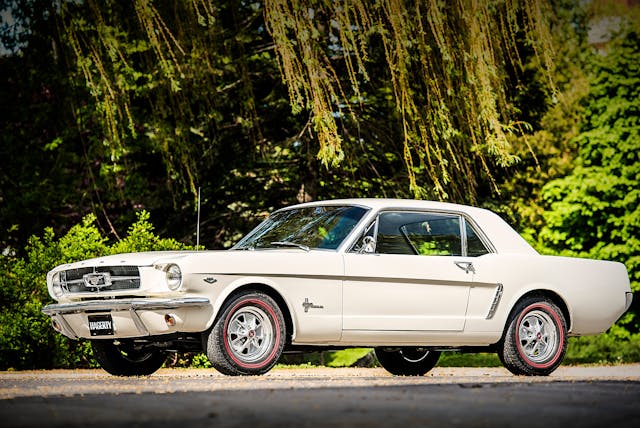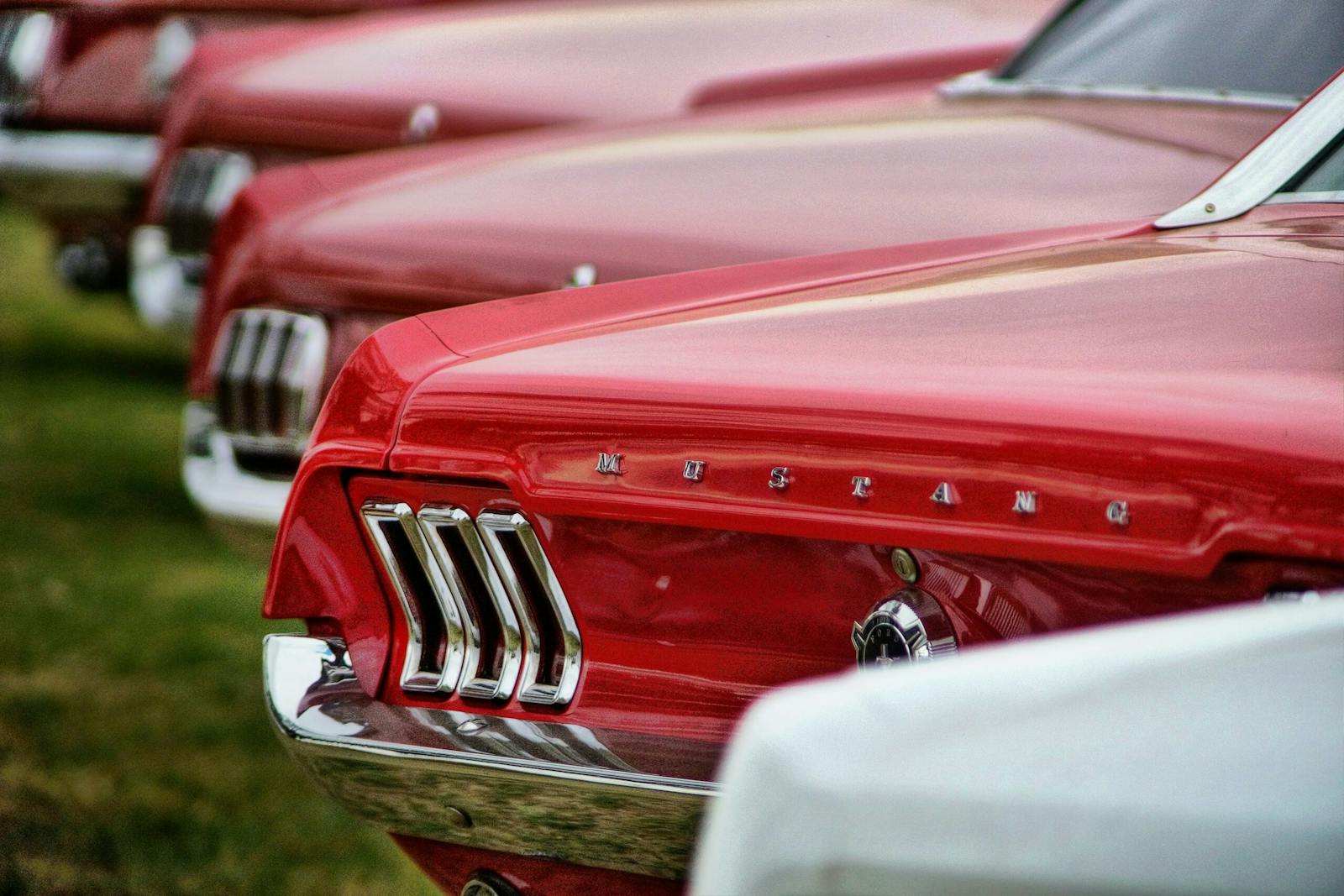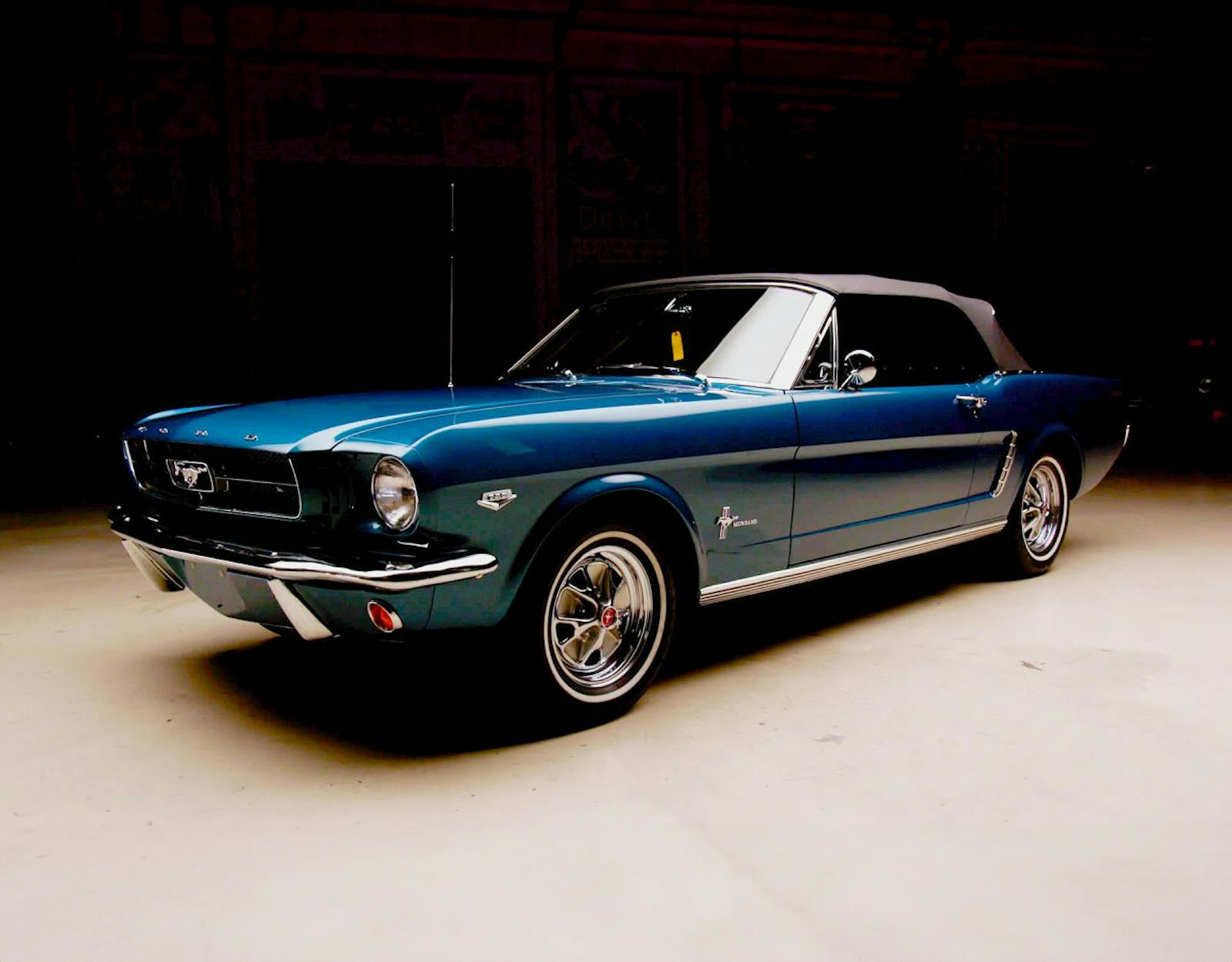These 2 assumptions about car collecting and age are dead wrong

Want a better understanding of what’s driving collector-car values? Sign up for the Hagerty Insider newsletter.
As the collector car market evolves and different generations age into and out of their time in the hobby, plenty of theories have popped up that attempt to tie certain habits and preferences to age. Sure, they may have anecdotal evidence going for them, or even a strong kernel of truth, but what do the data show? We took a look at a couple of these ideas to find out.
One of the prevailing theories of the classic car market is that enthusiasts chase their “poster cars.” That is to say, enthusiasts primarily want the cars they pined for—and maybe had hanging as posters on their bedroom walls—in their youth.
It’s a reasonable concept, but it’s unsupported by data. Every day, Hagerty fields thousands of calls from enthusiasts looking for a quote on insurance for a collector car. Since we will naturally ask for the age of the car and of the caller, we are able to track who is interested in what. Check out the typical difference between the age of the person and the age of the vehicle on the chart below.
The oldest enthusiasts are looking for vehicles typically 41 years younger than they are, while the youngest enthusiasts are looking for vehicles 24 years older. Let’s say it again: enthusiasts aren’t looking for the *new* cars of their youth. Remember that the next time you watch American Graffiti.
Collector age and value
Another prevailing theory is that young car collectors are primarily motivated by budget. Though it might seem counterintuitive, this is also untrue. There is no correlation between older buyers and high values, and younger demographics and more affordable cars.
To understand how that’s so, it might help to recall the old line about logical fallacies: Just because all cats have four legs doesn’t mean that all four-legged animals are cats.
It is true, in the macro sense, that older enthusiasts tend to have more money and spend more of it on collector cars. However, that does not necessarily mean the reverse is true—that more expensive cars always appeal to a higher share of older collectors.
Ferrari and Nissan are two brands that paint this picture well.

Ferrari’s many valuable collector vehicles appeal to an array of buyers. For instance, both the 1964–1967 Ferrari 330 GT (2+2) and 2020-Present Ferrari SF90 are $700K+ vehicles with a similar number of quotes. However, only 42 percent of the people calling us about insurance for the SF90 are older enthusiasts, compared to 65 percent of those calling about the 330 GT. The SF90 may appeal to appreciation for modern technology and contemporary use habits, whereas the 330 GT 2+2 likely resonates someone who digs a set of Webers and a manual transmission.
Zooming out and looking at all Ferraris, we do see some correlation between a collector’s age and a Ferrari’s value, but it’s a weak one at 0.32 (a perfect correlation would be 1). In other words, just because a Mondial is comparatively affordable doesn’t mean that younger buyers are flocking to it for that reason.
For Nissans, the correlation is actually negative, meaning the brand’s more expensive vehicles (read: Skyline GT-Rs) are slightly more likely to get interest from younger collectors. Only five percent of our policy quotes for the most valuable model, the 1998–2004 Nissan Skyline R34, come from older enthusiasts.
Zoom out and you’ll see that the relationship between vehicle value and age varies greatly across the market:
(Vehicle) age is nothing but a number
In essence, we are not arguing here that the age and value of a vehicle don’t matter. The facts that today’s thirty-somethings weren’t alive during the British Invasion and typically don’t have $100k to spend on a classic certainly helps explain why relatively few of them own E-Types.

Rather, we’re pointing out that these are just two of many variables. Consider, for instance, scale of production over time: Older Mustangs get a lot more interest than newer ones from young collectors. It’d be easy to conclude that young collectors don’t care about newer Mustangs (in fact, it’d make a great headline), but that would miss the fact that older Mustangs were produced in much higher numbers than the newer ones. For a brand like for Ferrari or Aston Martin, it’s just the opposite—production numbers have grown greatly over time, so interest as measured by insurance quotes naturally skew toward newer vehicles.
If nothing else, our data can serve as a helpful reminder to treat stereotypes with extreme skepticism. The next time you see a desirable classic roll by, about the only thing you can safely assume of its owner is that they have great taste.
***
Check out the Hagerty Media homepage so you don’t miss a single story, or better yet, bookmark it. To get our best stories delivered right to your inbox, subscribe to our newsletters.
Via Hagerty Insider


Ignore age and look at it by net worth and/or income bracket. I suspect very quickly the Ferrari and Godzilla Nissans will live in a very narrow band of such a chart (the top).
Pre-war high end cars have been on almost nobodies youthful wall for decades as “poster cars”. I predict they also live with a narrow demographic –which is why they exist as trophy cars and many come up for auction every few years with minimal mileage change.
Including the high rollers in the data skews it entirely. Big money people with high end cars (or multi-car collections) are likely not a high % of Hagerty’s total customer base.
What people want meets the cold reality of what you can afford. Lots of people would take a 57 Chevy, 69 Camaro, 68 Mustang, 2009 Evo etc. but values put them out of reach for an average person that would put it high on their list. How many later gen Camaro owners would trade theirs in for that ideal first gen? (quite a few I would guess).
Mustangs you have the special case of high-desire first Gens hitting the Mustang II wall of market disdain, the mixed view on the fox body era by collectors and then you are into modern used cars (some of which are already highly collectible). Mustang also has a community… which easily turns into someone having multiple generations, and creates buzz and intake to new interest. Kaiser-Frazer has passionate fans too, but the momentum is different.
Many people choose the cool and popular, especially as newbie entries into something. Hip hop artists repeatedly sing about Mercedes not Dodge Neons for a reason, but that demographic made the Chrysler 300 a massive success beyond the expected golf club demographic. When aspirational meets attainable you have interest across age groups.
Length of ownership matters too. I suspect many Hagerty customers are long-term owners of a vehicle they couldn’t afford (or wouldn’t pay that much) to go buy in the same condition off someone else today. Look at new added vehicles only (say for last 3 years) and how is the data different?
And then you are blurred by the nostalgia factors (person that wants an American Graffiti coupe, ZZ top 34, Bullet Mustang, etc.) including family heirlooms that could be market darling things or the total opposite.
If you must look at age, factor it by when the person was 12-22 what were the cool cars at the high school. That’s what you wanted aside from the poster cars you can’t afford. For half of Gen X that’s musclecars, for the younger half of Gen X you will have the Japanese performance, Iroc Camaros and VW Jetta etc. fanbase growing in there but the muscle car love hasn’t gone away because many, many view that as the peak of cool cars.
I also suspect your data is highly skewed by Corvette ownership… likely accounts for the “silent generation” (you call them pre-boomer) skew towards younger than them vehicles by such a large number. Probably a lot of 70s-90s Lincolns and such in there too.
^I’d love to be rebutted on any of the above with actual filtered Hagerty data by the way.
I think snailish makes some very good points. Or at least some very debatable ones (debate isn’t always based on disagreement, b-t-w). Not sure whether data can be filtered to either support or rebut his speculations, but there is some real validity of thought in there!
Or I could be way off base! Thanks for the kind words Dub6
I think when you talk collector you have to separate the investment collector from the enthusiast collector
The enthusiast collector is probably more likely to collect the cars they coveted in their youth – now that does not necessarily mean the cars that were new in their youth – which complicates things further.
Personally, I generally target sporty, interesting, but off the collector norm. I drive mine regularly and would never buy a museum piece. I would once have said that my interests were in the 70s range, but my current stable ranges from the mid 60s to the low 10s
There are no absolutes.
I work in the performance aftermarket and what the market was to what it is today is ever changing.
When I came up in the 80’s we drove old muscle cars because they were cheap, fast and easy to modify.
Then the 80’s came and it was mostly about the GN, Fox body Mustangs and F body. They were easy to afford and modify.
Today kids are to the point where they are not as involved as they once were. It is all about computers, video games and IPhones. Cars are a secondary deal as in the past they were now we socialized but today they go on line.
If they do buy often it is a truck or Jeep. They are easy to buy and modify. Emissions can be left alone.
This is a little what you can afford, a little what they like and a bit of social changes.
Youth participation is at an all time low as our customer base is getting older and older.
I know events I attend I sm often the kid in my 50’s.
The younger kids at times will attend events with people of their age but they are not as common as it used to be back in the day. Cars and Coffee can draw some out. Also some parts of the country have more younger car folks than others.
Something else is that Hagerty is not insuring most younger auto enthusiast. Most are not carrying collectors insurance. Most have normal liability and not specified.
Much like Barrett Jackson is not representing the normal sale price Hagerty is not always covering the average driver. Most times they insure cars of more than average value.
As emissions become more difficult and the arrival of EV models there is much up in the air with collector cars. Oils are getting worse for flat tappet cams and Fuels are getting worse.
I hope to retire before it all comes to a head. I wish companies like Hagerty would take a more proactive move to protect our future. Collector cars are such a small part of the big picture they should be protected and preserved.
Good point on age of insured (among other good points). Where I live it takes a serious $ commitment to add a person under 25 to an insurance policy if you have enough vehicles for the company to call your young person a primary driver of one of them. Even worse if said young person tries to get their own insurance.
High school parking lots in my area for 20+ years have been Civics, Jettas and trucks. It seems like the Jettas are fading out now and Subaru got in their big 10 or so years ago. A 17 year old that can afford a muscle car and the insurance on it… is for sure not average.
When we did it we just carried liability on a 64 GTO because we only paid $3k for a numbers matching car in 1982.
Today it is near impossible to insure below 25.:
Here the lots at schools are mostly American cars and trucks. Mini vans and SUVs. Not many imports as they are expensive to fix and rusted out.
We boomers grew up as the Golden Age of Motoring was really blossoming into the performance period. We had been introduced to motoring, Interstate Highways, big races being broadcast on TV, larger-than-life car people, and automotive styling that went well beyond the utilitarian designs of our parents’ day. All of this hit us at our most impressionable stage of life. TV shows and movies (even cartoons) featured the car as almost as important as the human stars.
We therefore developed a crush on the automobile like no other generation before us – and frankly, after us, either.
What did today’s teenager grow up experiencing regarding cars? Did they watch The Duke Boys or Cookie of 77 Sunset Strip on TV? I don’t buy that today’s youth have much reason to yearn for “collector cars” any more than they want to fly on a Wright Brothers biplane to go to Orlando for Spring Break. It’s natural evolution, if you will. Sure, vinyl records have had a resurgence. But does that translate into my grandson shelling out 7 figures for a ’63 Split Window? I highly doubt it.
Sorry, I think the passion for “collector cars” is dying a slow and probably painful death, no matter what the data seems to indicate…
Ricky Bobby and the fast and the stupid. They had no real good car movies. Just crap.